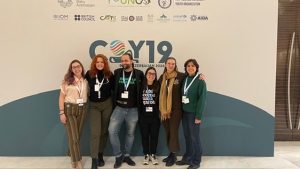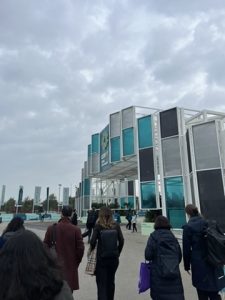As COP29 in Baku came to a close this past weekend, and as I, like many others, reflect on our time there, I have mixed emotions. It was incredible to be in rooms and meetings where key discussions and moments of progress occurred. It was inspiring to witness the passion and commitment of so many diverse voices and groups working toward climate solutions around the world. Yet, the final results coming out of COP29 have left some advocates with a sense of disappointment and confusion. It’s understandable, that as our world inches closer and closer to going over the 1.5°C limit, our minds grapple with the feeling of both optimism and pessimism.
The vast, ambitious, and transformative changes and finance deals that many had hoped for, did not occur at the level at which was needed. The lack of a clear commitment to climate finance and the slow pace of negotiations were notable points of frustration for both observers and negotiators alike. There is a sense of disappointment around the New Collective Quantified Goal (NCQG) for climate finance, which has left developing countries still waiting for increased support to help mitigate and adapt to climate change. These major negotiation topics of COP29 all feel like missed opportunities, and perhaps there truly is a disconnect between the urgency we feel and the pace of global negotiations.
Regardless, COP29’s outcomes don’t mean that all hope is lost. COP29 may not have produced all the progressive results many had hoped for, but the process itself of these negotiations is still vital. Every COP is a part of a larger effort to create meaningful agreements. Even outside of negotiation room doors, the networking and building of new coalitions are still crucial steps toward lasting change and action. I believe incremental progress is more important than we realize.
The challenges seen at COP29 underscore the need for renewed commitment to climate action. It’s a reminder that action toward combating climate change cannot succeed without acknowledging and addressing the needs of those most affected by the crisis. Moving forward, our climate action must be coupled with social and economic justice.
Despite the setbacks, COP29 still gave me opportunities for hope and provided a unique forum for addressing global climate challenges. COP29 celebrated the first submissions of Biennial Transparency Reports under the Paris Agreements, beginning a brand new chapter of global climate transparency. A coalition for health-climate action was formed at COP29, which will foster increased movement to health-resilient climate policies. COP29 provided lessons in the increasing empowerment of grassroots movements and local leadership, the importance of technological innovation and collaboration, and why we hold governments accountable. No matter the frustration from the COP29 results, individuals, organizations, governments, and the private sector coming together is never a waste of time. We now know what work lies ahead of us. The next COP, the next round of negotiations, and the next movement are each an opportunity to turn our disappointment and frustration into action. Moving forward, we are unified in knowing that the future of climate action is one of ambition and results.


